Mistletoe in July
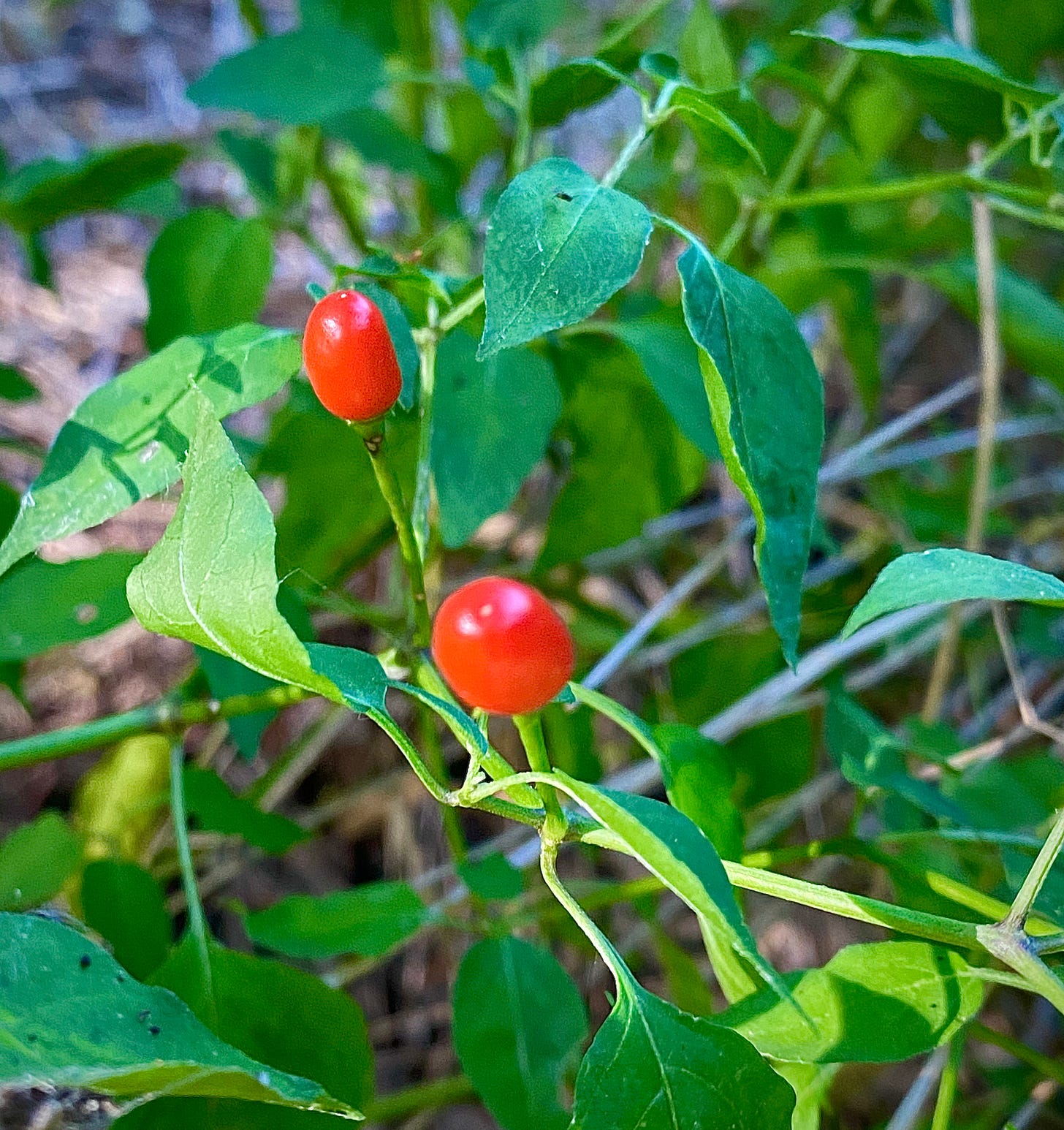
I spotted the first chile pequin plant of the summer in our yard on Tuesday. It’s in a particularly feral corner of the lot, growing up out of some dump-fill dirt at the edge of the bluff, mixed in with inland sea oats and poison ivy under the shade of some hackberrys but still able to soak up the hot sun of mid-day. The chile pequins are probably my favorite plant in our wild yard, in part because of what they teach about the deep history of the land, and also because they taste so damn good.
They aren’t that remarkable to look at. They provide no spectacular flowers, they don’t get very big, and their leaves and stems are pretty scraggly in most specimens—especially in weeks like this where the temperature has blown past 100°F most days. They look like a weedy little shrub, until the green fruits the size of tiny raisins turn hot red as they ripen on the vine. That’s when they’re ready to eat, if you can handle the heat. Five to eight times as spicy as jalapeños (~60,000 Scovilles, according to the nerds who come up with such metrics), but with a shorter burn.
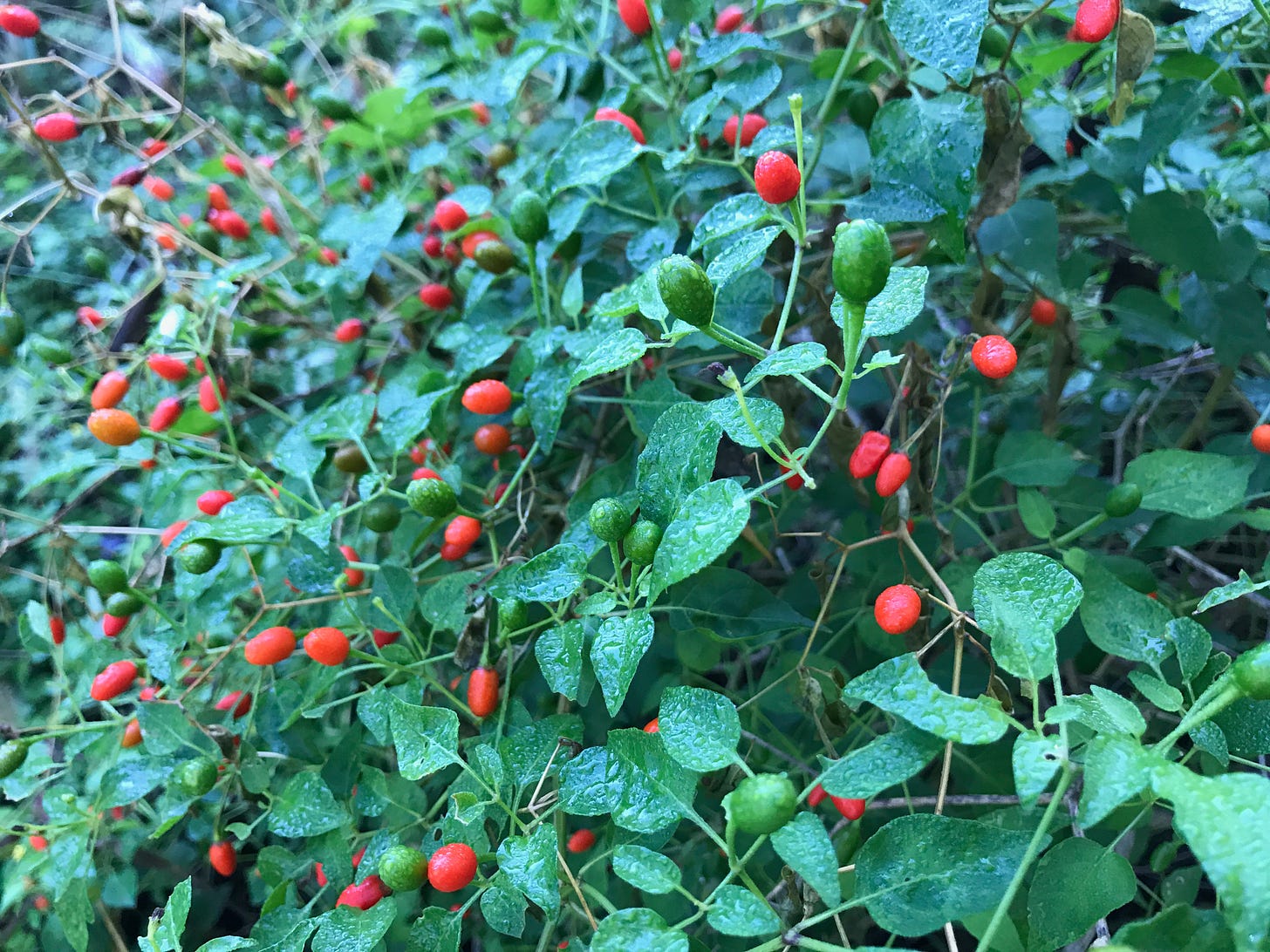
I didn’t know what they were until a landscaper from Indiana pointed them out to me the summer after we began our restoration, walking the woods behind our place as we searched for suitable pieces of rubble to use in our backyard grotto. I started seeing how widespread they were around here in these unmowed lands behind the factories. A plant that really only grows wild, its seeds spread by birds whose digestive systems condition them for germination. A food for foragers, be they avian or human. One that has been here longer than any of us, but has adapted to grow opportunistically in the Texas edgelands. Often literally at the edges—the second plant I found this week was growing through our chain link fence, as was the plant my brother-in-law found last month.
I took notice of chile pequin around the time I had rediscovered Frazer’s The Golden Bough, and I think I projected some of that sense of the mythic significance of mistletoe onto this decidedly non-Nordic plant. But the symbolic power of chile pequin is more real than any resurrection story: it’s the ur-pepper of the Americas, according to prevailing botanical consensus, the wild varietal from which all the chiles we eat, from jalapeños to bell peppers, have been derived through human intervention. A genetic master that encodes the natural history of these regions before the first humans walked over. No wonder the hot vinegars we make with them seem so special.
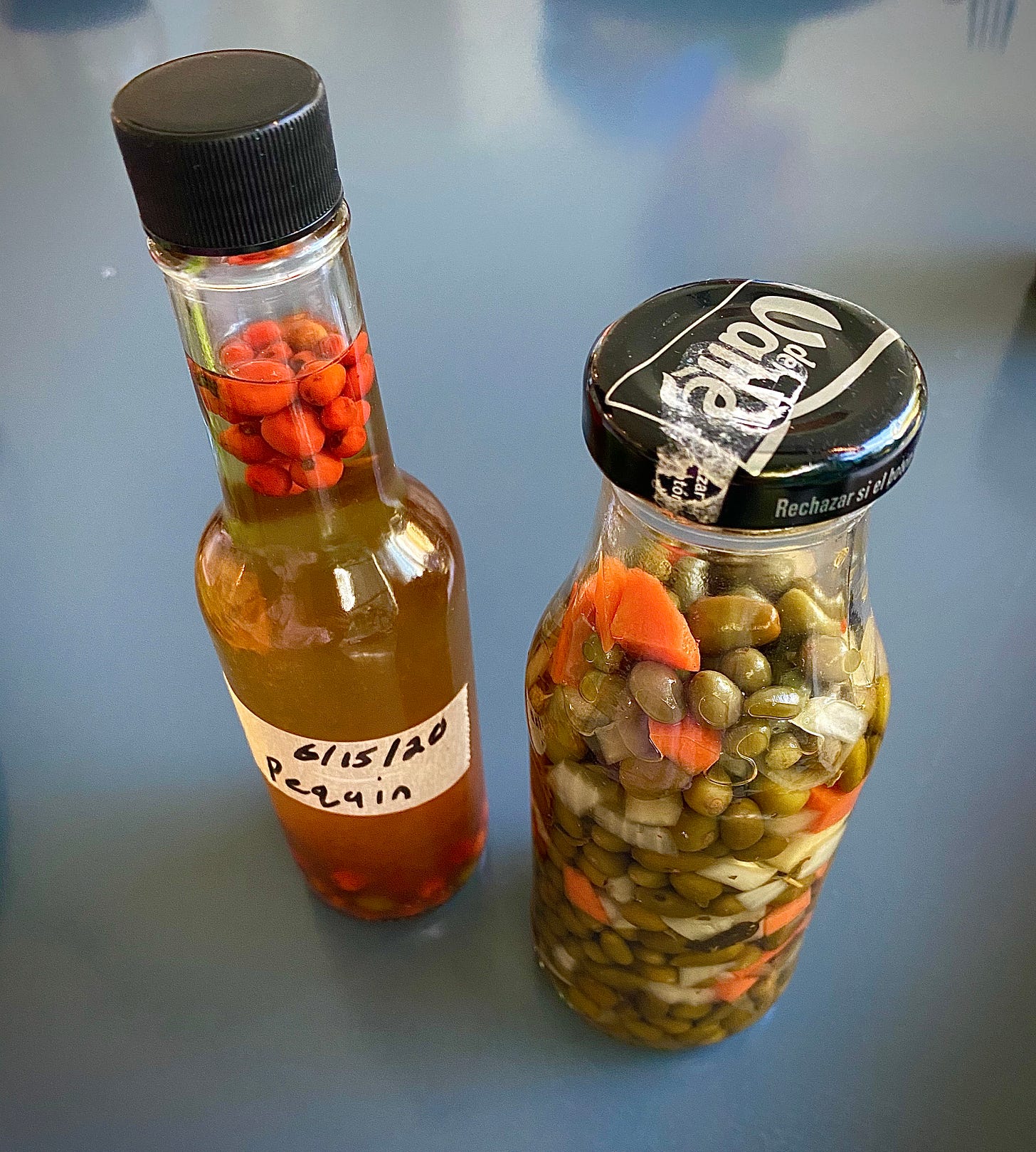
Its significance in the culinary cultures of people on both sides of the border is reflected in the diversity of common names people have invented for Capsicum annuum: chile pequin or piquín (likely after pequeño, for its diminutive size), chiltepin, chile amashito among the Chontal people of Tabasco, chile de monte, timpinchile in Chiapas, chilpaya in Veracruz, maax'ik in Yucatan, chile kipín in the Huasteca Potosína, chile congo in Nicaragua and northern Costa Rica, bird pepper, turkey pepper. Because of their resistance to cultivation and their desirability as a food, they can fetch a high price for the chiltepineros who know how to forage them in large quantities—up to thirty tons a season in Sonora, at prices above $65 a kilo, per one source.
I have been harvesting small batches from our yard every year for the past five years. They rarely grow in the same spot more than a few consecutive years. As hardy as they are, the plants seem sensitive to our increasingly volatile climate conditions. Last year several of our plants didn’t make it through the summer, and the fruit of the ones that survived had been devoured by birds by early autumn, presumably because their other normal summer fruits were more scarce in the long dry season. A survey of the forager blogs suggests those unpredictable conditions prevail throughout the wider transborder region.
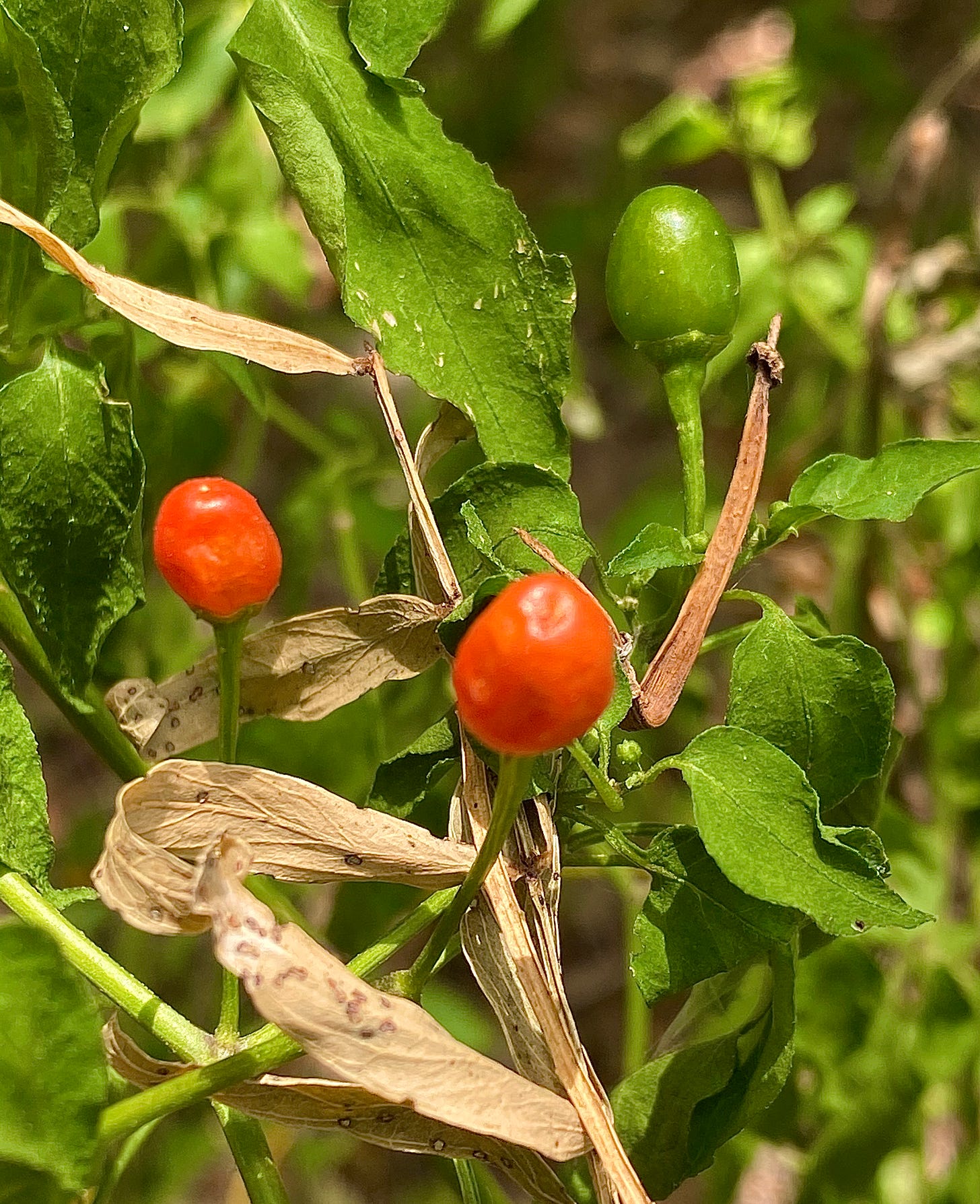
For me, the wild chile pequin I find growing around here is a pre-Anthropocene exotic—a plant that by its very existence, once you understand its truly wild nature, helps you appreciate how completely the world we live in is shaped by 12,000 years of human beings exercising control over the reproduction of others: plants, animals, and other people. That slow-burning revelation, once it settles in, makes the reappearance of these plants every year seem just a little bit miraculous.
If it can’t make it in its rapidly changing habitat to the end of the 21st century, we may have to try the trick this guy over at Foraging Texas suggests to grow it in a pot, by using industrial chemicals to mimic the pepper’s wild germination in avian digestive tracts:
Growing chile pequins from seeds isn't easy as they evolved to pass through a bird's stomach where the acid weakens the seed's tough coat. You can mimic this acidizing by soaking the seeds in battery acid or pool-cleaning acid for 1-3 minutes followed by rinsing then planting. Generally handling the battery acid is a risky thing so if you try this make sure you are wearing safety googles, protective gloves, and old clothing. Also please dispose of the acid properly.
Hopefully it won’t come to that, but reading this solution, you can’t help but remark at the ingenuity of the naked ape, even as you marvel at the ability of this ancient plant to grow in a yard of full of dumped trash (that probably includes some battery acid down there in the soil).
If you live here in the borderlands and want to find some pequin of your own, try looking in partly shaded areas of low brush and grass, probably near woods likely to harbor lots of songbirds. Near fence lines seems to be good, maybe because they are so often used as perches. If you find some, here are a couple of recipes for the hot vinegar—one with peppers for sale for those who can’t find any to forage—and some other wild pepper salsa recipes. The recipes are easy, it’s finding the peppers that’s hard:
Edible Houston: Chile Pequin “Peppa” Sauce
Woodland Foods: Texas Hot Pepper Vinegar (with peppers for sale)
Mexico in my Kitchen: How to Make Piquin pepper Salsa
La Piña en la Cocina: Chile Pequin Salsa Recipes
Alligators under the overpass
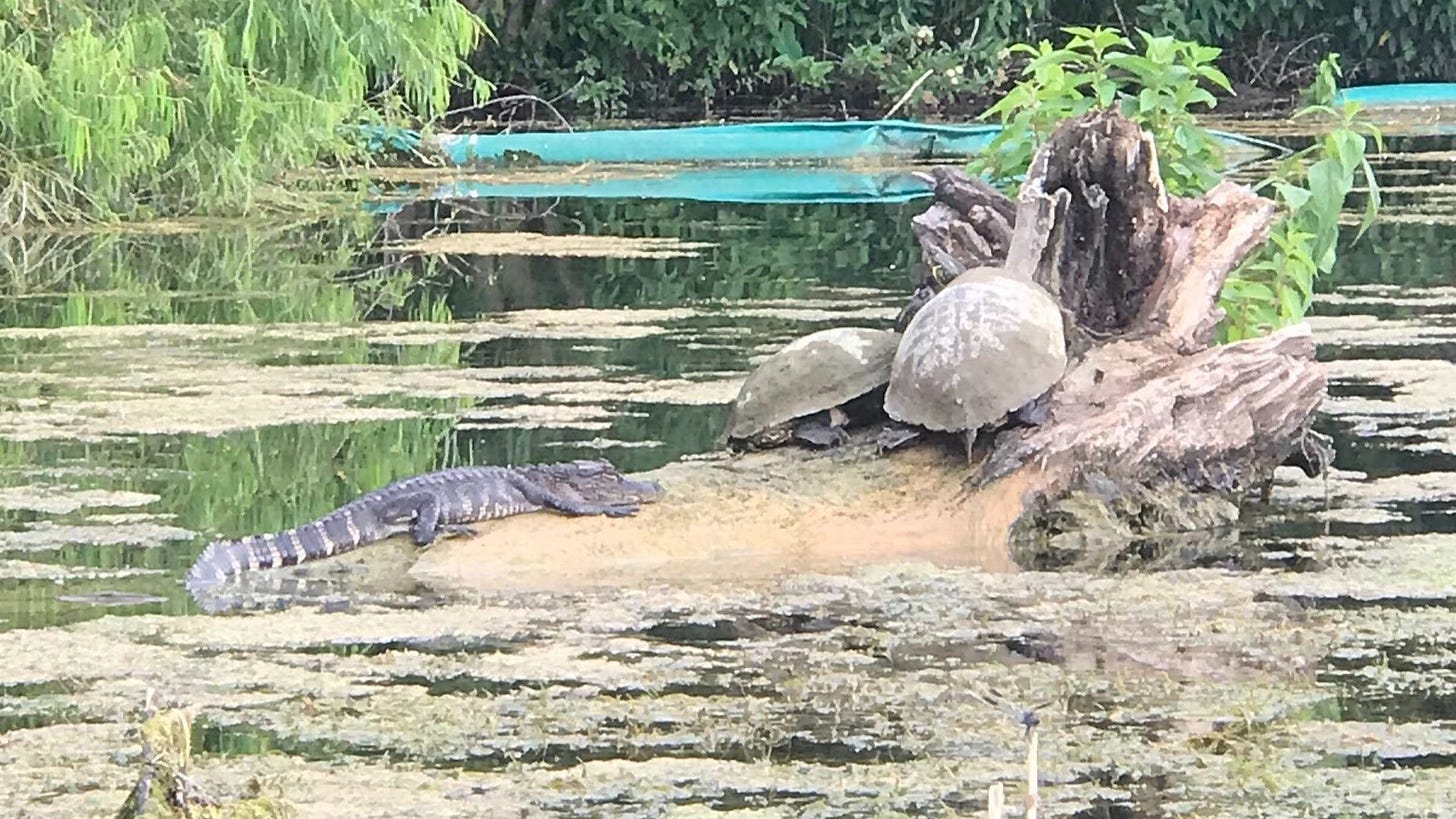
[Photo credit Will Chesson, via KVUE]
This week an alligator was sighted in Austin just upriver from here, off Peace Point, the little peninsula on the south bank of Lady Bird Lake a quarter-mile or so above Longhorn Dam. Just a juvenile, but still an uncommon sight this far from Texas’s swampier eastern forests and coastal zones. The underwhelmed Parks and Wildlife officer who talked to the local news suggested it was probably just an abandoned or escaped exotic pet. They wouldn’t be the first tropical pet to survive in a city that seems to have a twig-and-mud condo of Argentine monk parakeets on every cell tower, like this trio drinking from a puddle in the 7-Eleven parking lot up the road (who nest in the tower behind the store).
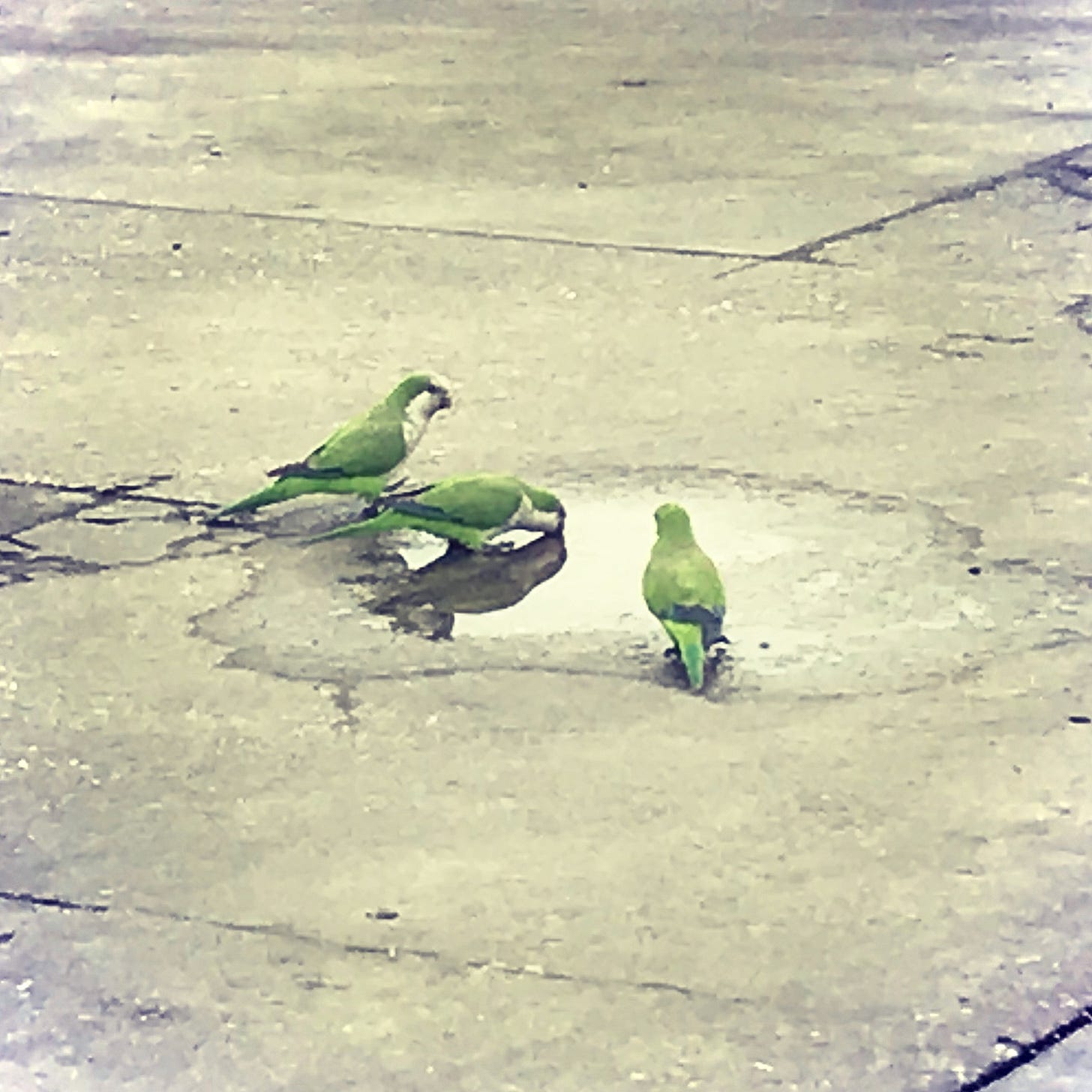
But having seen alligator tracks in recent years on this wilder side of the dam, and read the reports of gators just downriver in Del Valle, I wouldn’t be surprised if they have found a new habitat in these parts. Things will get more interesting when they start crawling up into the backyards of Austin’s tonier lakefront neighborhoods of Westlake and Tarrytown.
My brother-in-law and nephew went out in their canoe looking for teen gator that evening, but have yet to find it. We’ll be keeping an eye out for more tracks like these ones from the summer of 2018—an especially alarming thing to see on the bank when you are walking in the river:
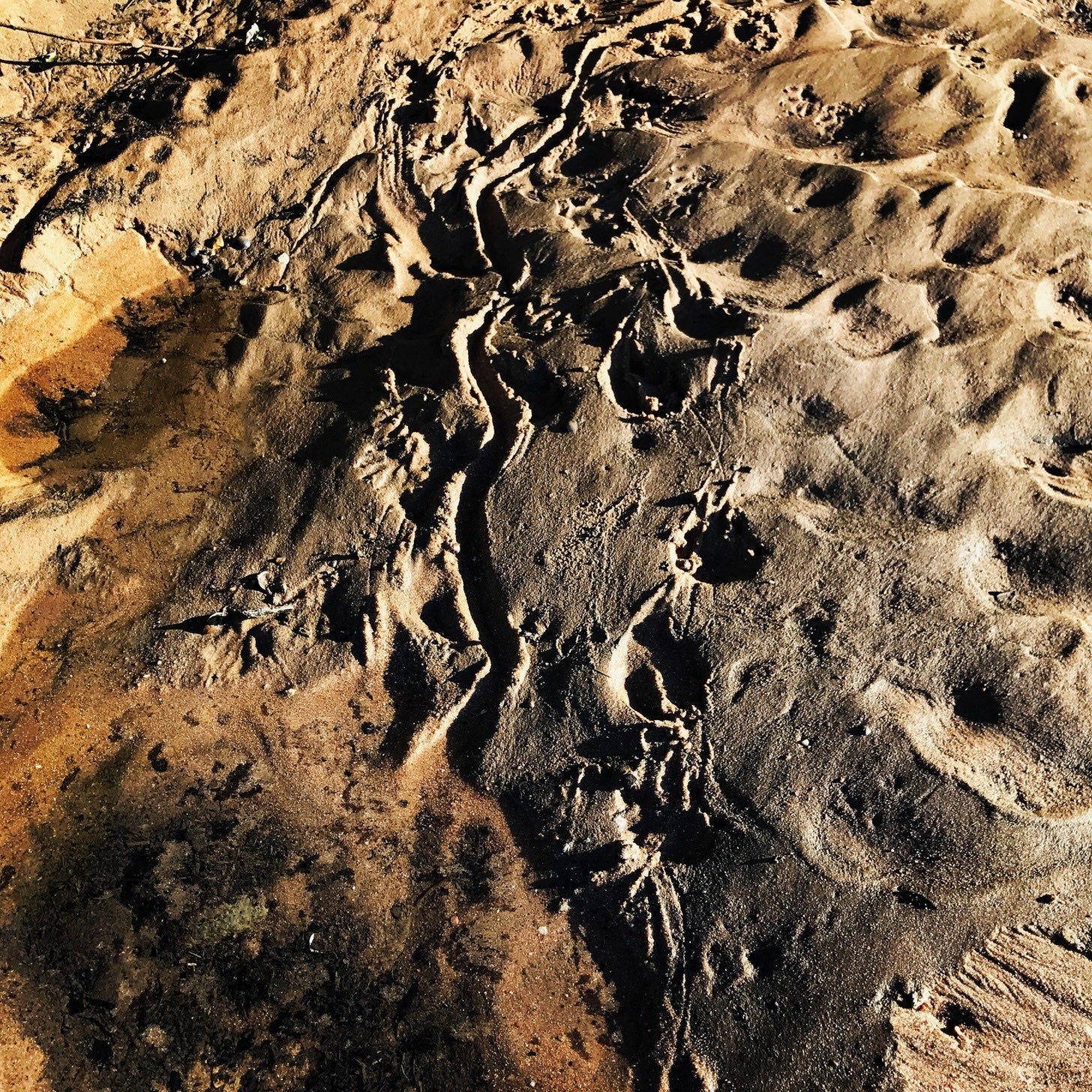
Return of the night bats
I saw summer bats over the house for the first time this week, right at dusk, but still early enough that you could see them clearly 25 to 50 feet above, following the river corridor east. These are the Mexican free-tailed bats that roost during the warm months under the Congress Avenue Bridge in the heart of downtown. They are beautiful flyers, and when you watch them you can see how they zig zag their way along their airborne path, swallowing bugs in flight as they go. Friday morning as I walked out to my trailer around 5:30 am, one buzzed my head just a few inches away. In the moonlight I could see it coming from about ten feet ahead, early enough to dodge. Not that I needed to—bats always know how to fly around you. But when they are that close, you learn just how fast they fly. When you think about how many emerge from their urban caves every night, and how few have collisions with our industrial infrastructure, it’s a testament to their unique navigational skills. But having watched how many bugs they seem to consume in a minute, I found myself wondering how many bugs they eat in a night when they head out at 8 and come home at 6 the next morning.
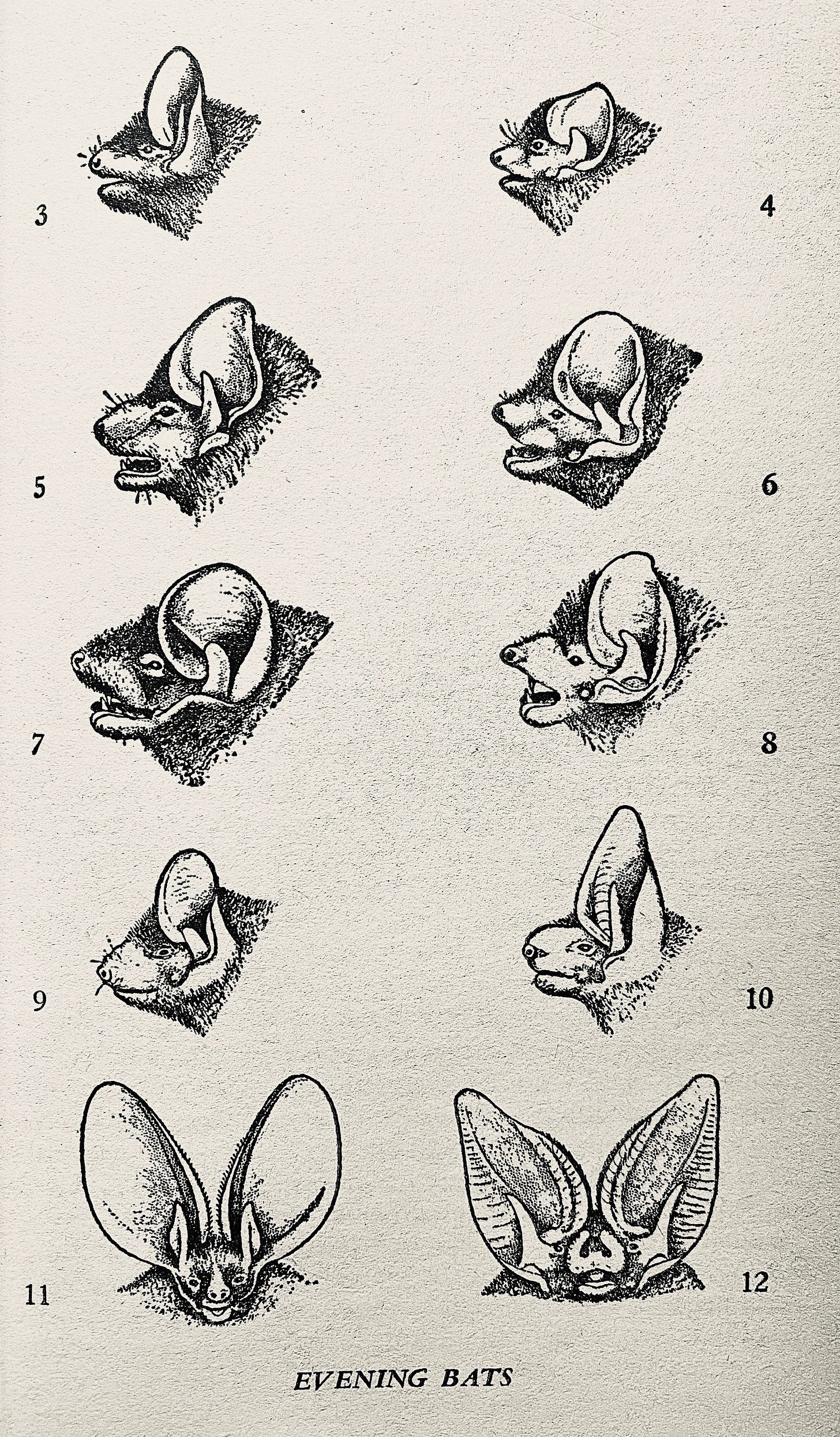
Failed State launch
I’ve had the weird and uncomfortable experience this summer of turning on the news and seeing scenes that look a lot like the nightmare scenarios I invented for dystopian novels, thinking I was imagining something plausible but unlikely to ever occur. The spectacle in Portland this week was freakishly similar to the opening of my book from last summer, Rule of Capture, about a burned-out criminal lawyer in Houston who finds himself defending political prisoners detained by federal paramilitaries who steal people away in unmarked civilian cars, after martial law is declared in response to out of control protests and the disruptions of natural disaster—a scenario that drew on stories my in-laws told of what things were like in Argentina in the 70s.
The follow-on to that book, Failed State, will be published on August 11. Both books use lawyerly noir as a platform to deal with greener themes. In Rule of Capture, it’s about real estate and the revelation that property law ultimately is just a cover for the acts of theft involved in the conquest of the Americas. Failed State is a more utopian story about people settling scores and trying to build a better future in the aftermath of a nation-breaking crisis, and about the deep Anthropocene the chile pequin makes me think about—wrestling with how we fix the ecologically broken foundations of civilization. I don’t know if the book fully cracks that nut, but hopefully it tells an entertaining story that also helps see the real world differently. This amazing cover by designer Owen Corrigan gives a good sense of the rewilded aesthetic:

This is a challenging year to launch a new book in, with bookstores closed and everything from review copies to readings moving to exclusively digital, but one of the great things about that is that you can come to the launch event without having to leave home. On Wednesday, August 12 BookPeople in Austin will be hosting a virtual launch for Failed State, at which I will be reading and in conversation with my friend and colleague the author and activist Cory Doctorow. It should be a fun event, with plenty of time for questions from the audience, and BookPeople will be providing signed and personalized copies to anyone who wants them. Please save the date if it sounds of interest to you, and you can register for the virtual reading and/or pre-order a signed or personalized (or unsigned) copy of the book (or other books by me or Cory) here.
More about the book here at publisher HarperCollins.
Armadillos are faster than you think
This week’s video is from the archives—eight years ago on July 15, 2012. It shows one of a pair of juvenile armadillos I found foraging in the afternoon just outside our back fence. You can see how blind and deaf the armadillo seems, until it pulls its grub-hunting snout from the dirt and catches a whiff of human, and then demonstrates the surprising speed armadillos are capable of.
Have a great week, and keep your head up.

